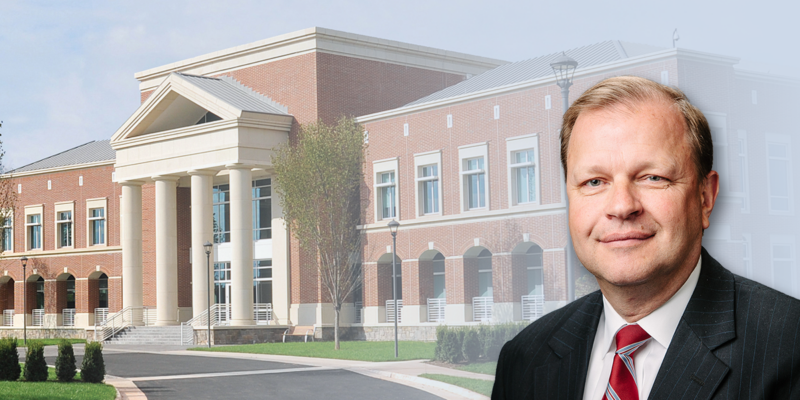
CFC CEO Andrew Don shared his perspective on the U.S. economic recovery, where we go from here and the coming generational wealth transfer and what that means for electric cooperatives in his 2021 CFC District Meeting remarks.
“To put this post-pandemic recovery in perspective, 2021 and 2022 are projected to be the two strongest years of economic growth since the early 1950s,” Don told meeting attendees during a luncheon provided by CFC. “Future economic growth in the U.S. is expected to be determined by coronavirus delta variant infection rates, a potential increase in interest rates and overall consumer sentiment and confidence.”
Inflation Matched the Highest Level of the Year in September
One of the more important factors affecting the economy and the outlook is inflation. Don explained that the headline Consumer Price Index, the most common inflation gauge, increased to 5.4 percent in September, matching this year’s earlier highs from June and July. Consumers have seen broad price increases across a variety of segments, he said, with inflation remaining elevated due to supply-chain disruptions caused by the pandemic.
“Economists have said that 70 to 80 percent of the increase in inflation over the past year is directly attributable to the supply-chain breakdown,” he explained. “The market’s concern is whether the Federal Reserve will fall behind the curve in terms of being able to slow inflation in the near term, by not raising short-term rates.”
U.S. Employment Outlook is Cloudy
Regarding the employment outlook, Don said “While the U.S. economy rebounded strongly, it’s happening with the lowest rate of labor force participation in more than four decades and a record number of vacant jobs. Unfortunately, there is no simple fix to the labor market imbalance. Americans evaluated their work-life balance and may be hesitant to return to jobs in industries that require a set schedule with in-person work.”
Another driver of the low labor force participation is the surge in early retirements, Don added. “These retirements will be an important factor to keep an eye on because their heirs will be the next generation of investors,” he stated. “While millennials initially drove interest in environmental, social and governance (ESG) investment, individual investors of all ages and genders are now focusing their investments on companies that have strong ESG records.”
Next Generation of Investors are Inheriting Trillions of Dollars of Assets
Millennials are the largest living U.S. adult generation, surpassing boomers in July 2019, Don explained. He emphasized that this generational cohort is poised to inherit more than $68 trillion of assets over the next two decades, otherwise known as the “Great Wealth Transfer.”
“High net worth millennials have helped accelerate the interest and growth of ESG investment,” Don said. “The world’s top asset management firms are working to address these changing demographics and investor behaviors today. These changes are being driven by the firms’ bottom line and fund management frameworks to meet investor demands 15 to 20 years down the road.”
Don pointed to BlackRock CEO Larry Fink’s letter to CEOs last year that stated climate risk is investment risk and that as markets started to price climate risk into the value of securities, it would spark a fundamental reallocation of capital. In Fink’s letter this year, he noted that some thought the pandemic would divert attention from climate risk. Fink found that was not the case and he stated that the reallocation of capital accelerated even faster than he had anticipated.
“Fink believes this is the beginning of a long but rapidly accelerating transition, while it may take many years, the transition has the potential to reshape asset prices of every type,” Don said. “Fink warns management teams and boards that they will need to consider how this transition will impact their company. In the capital markets, he is certainly viewed as being smart money and someone to pay attention to.”
Management Teams and Boards Should Consider ESG Transitions
ESG has become much more than a theoretical concept or a philosophical approach to running a business, Don stated, it is becoming a business necessity, especially for CFC’s ability to provide reliable and affordable access to capital for our member-owners.
“The electric cooperative network has a strong ESG story to tell investors and rating agencies,” Don said. “Electric cooperatives were formed to provide the essential service of reliable and affordable power to underserved communities more than 85 years ago. Today, we’re seeing members meet another vital need that was exacerbated over the last 18 months by the pandemic—the essential service of broadband.”
Proceeds from CFC’s $400 million sustainability bond, the first ESG bond issued for and by the electric cooperative industry, were used to support 48 member broadband projects in 20 states. CFC’s loans outstanding to its members related to construction and operation of broadband services is approaching $1 billion.
Don said that CFC is ready to work with members to help determine the best financing structure to enter into broadband and renewable projects and provide funding when done right.
He concluded, “At the end of the day, the strength of CFC’s credit ratings and quality of our loan portfolio is tied to our members’ financial performance, healthy generation and transmission and distribution cooperative relationships, and the shared mission to provide affordable and reliable essential services to rural Americans. The uniqueness of the electric cooperative business model is our biggest asset.”
